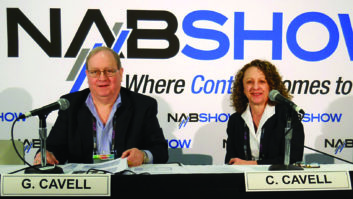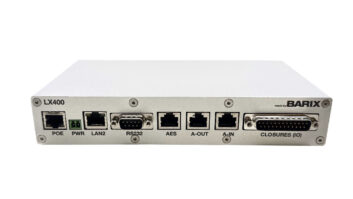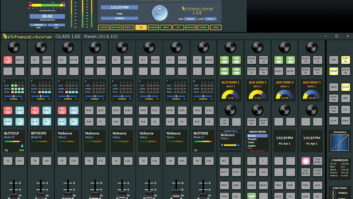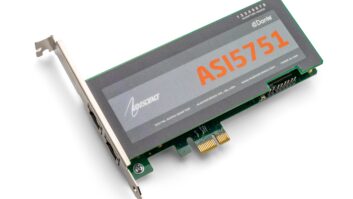We’ll be moving the Radio World offices to a different floor of our building here in northern Virginia in a matter of weeks. Looking around my office in preparation, I realize not only that I need to get packin’ but that I haven’t shared interesting book titles with you lately.

“National Association of Broadcasters Engineering Handbook, 11th Edition” — Whomp! This is satisfying when it lands on your desk.
Editor in Chief Gary Cavell and his associate editors — David Layer, Skip Pizzi, Bill Hayes and the late Tom Osenkowsky — get top billing for a “completely revised, substantially updated” edition of an industry classic. Kudos also are due to its 102 (!) contributors — radio and TV tech experts all — and another two dozen people whose earlier writing is incorporated.
A decade has passed since the previous edition of the handbook. As NAB EVP/CTO Sam Matheny notes in the foreword, our industry has seen tremendous and accelerating change, with increased connectivity through IP technologies and the move by broadcasters toward becoming multiplatform digital distributors.
Radio World and NewBay have no role in this project but I’m a big fan of it and proud that you will find many familiar names among the bylines, including some of our editors, authors, contributors and interview subjects.
Buy it at www.nabstore.com for $220, less a discount for NAB members. This hardcover book, all 2,000-plus pages of it, is like a college course in broadcast engineering. We’ll tell you more about the contents in coming weeks.
***

“9XM Talking: WHA Radio and the Wisconsin Idea” — Randall Davidson explores the underappreciated history of educational radio in a book published in 2006 and now reissued to mark the centennial year of Wisconsin Public Radio, including a new foreword by pubradio icon Bill Siemering.
Carefully researched and thoroughly footnoted, it starts with the broadcasts of experimental station 9XM at the University of Wisconsin and explores the creation of WHA, WLBL and the Wisconsin Public Radio Network, and how those influenced modern public radio. A substantive history work for any radio or public broadcasting buff.
You can purchase it for $24.95 at uwpress.wisc.edu/books/3835, and also watch a 50-minute video by WPR with the author there.
***

“Columbus Radio” — The “Images of America” series from Arcadia Publishing includes numerous photo books about the history of radio as it was experienced in individual communities around the country.
Here, Mike Adams — once a top-40 DJ on station WCOL — remembers how two professors and a preacher “invented” Columbus radio, starting with science experiments in classrooms and a minister’s desire to extend his audience. Stations prominent in the book include WEAO, WOSU, WMAN, WCOL, WBNS and more; the photos take us up to the 1970s. Look for one of Elsie the Cow being interviewed.
You may recognize Mike’s name from other contexts. He is professor emeritus of radio, TV and film at San Jose State University and created two documentaries about broadcasting for PBS; he’s also board chair of the California Historical Radio Society.
Part of the great fun for a Radio World reader is to scrutinize the photos not only to spot memorable air talent but to identify classic gear visible in them and to chuckle over the early remote vehicles, old radio newspaper advertisements and funky DJ haircuts.
Sold in bookstores and online, it retails for $21.99.
INDY, SELF-PUBLISHED, SPECIALTY
Longtime readers know I often receive books that are personal accounts written by people who have a lifelong connection to the medium. These may come from a small publisher or be self-published. They are rarely presumptuous, sometimes not well edited and certainly not voluminous; an entire book might contain fewer words than a chapter or two of the NAB Engineering Handbook. Dickens would have said affectionately that there is “nothing of high mark” in them.
But they are works of passion by radio professionals who want to remember and to be remembered. The authors enjoyed their careers and want to share some of their favorite memories with others. Opening one of these small personal biographies is like sitting on a porch of an autumn evening and talking with a fellow radio junkie about his or her memorable career.

“A Man and His Medium: An Indelible Signature on Radio, Television, Cable” — Alan Henry’s book is one such. Written with friend Gordon Hastings, it provides anecdotes from throughout Henry’s life and radio/TV career, most notably his seminal role in creating “confrontational” talk radio and the all-news format in the 1960s.
Hastings has written, “Alan Henry took high risks to help create programming that is today universal across all media. Over the decades these formats have launched thousands of individual careers in radio, television, cable television and the Internet.”
The subject of creating angry talk and all-news, and the subsequent impact of those ideas, certainly deserves a much deeper telling than Henry and Hastings give it. You can read their book in an hour or two and it will leave you wanting more about those topices. But for anyone interested in the world of Joe Pyne, John Kluge, Metromedia, Jim Lightfoot, Don McGannon, Westinghouse and “all-news-all-the-time,” it’s enjoyable. Available on Amazon for $11.95 in paperback or $3.99 via Kindle.

“American Radio Then & Now: Stories of Local Radio from the Golden Age” — Filmmaker, musician and entrepreneur Robin Miller laments that radio has changed from its days of being “a government-protected bastion of localism.” This book — based on his personal listening experiences, his work as a DJ and his interviews with numerous broadcasters — is a rumination and informal history of our medium for people who can’t get enough of radio that made us lean forward: names of yore like The Shadow, Kate Smith and Bing Crosby, but also Garrison Keillor and Steve Darnall. The book, published in 2015, is available via free Kindle app for $9.99.
I have more books along these lines to tell you about in an upcoming issue.












